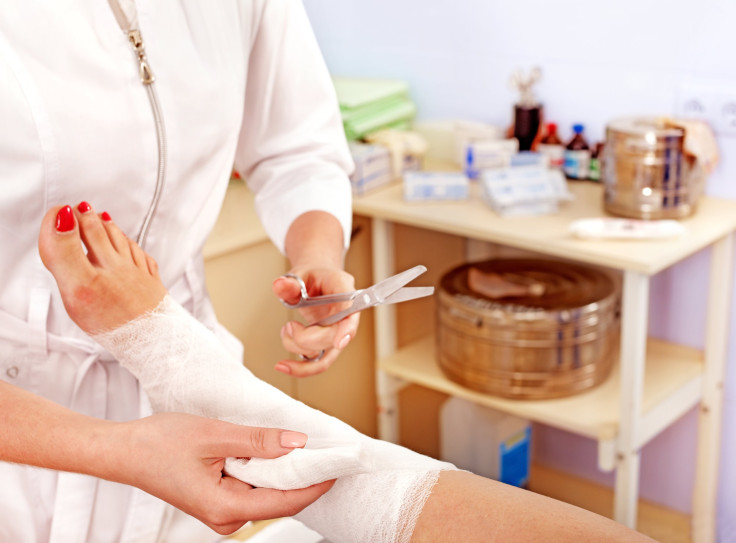Hard-To-Heal Wounds Benefit From High-Frequency Electricity

A new study has found that high-frequency electrical stimulation — though it may sound a little scary — can actually help heal chronic wounds.
Wounds like diabetic ulcers are difficult to heal due to the lack of blood supply near the wound site — they are made up of damaged blood vessels. Scientists have, for a while, used electrical stimulation to actually spur the growth of blood vessels. A new study found that using high-frequency electrical stimulation is actually more effective than low-frequency electricity.
At the University of Cincinnati, engineers applied electricity to vascular cells, which are used to heal wounds. They tested different magnitude and frequency, and found that high-frequency electrical stimulus – similar to what is produced by cell phones or WiFi networks – actually improved the growth of blood vessel networks by 50 percent. Low-frequency electrical stimulus, on the other hand, didn’t provide such an effect. The researchers will present their results at the American Physical Society.
The electrical stimulus changes the ionic environment of the cells that line blood vessels, known as endothelial cells. The electricity can link proteins in order to activate growth, and produces “growth factors,” which are one of the body’s ways of healing itself. During the experiments, the vascular tissue cells were exposed to the electrical stimulation for one hour every day for seven days.
“Electrical stimulation activates the pathway for angiogenesis (formation of new blood vessels), and the vascular network growth is enhanced,” physics doctoral student Toloo Taghian, an author of the study, said in a press release. “We can expect that, as a result, wound closure would be enhanced, leading to a faster healing.”
The researchers also developed an antenna which is able to apply these electrical signals to localized wounds. The design of the antenna is now the subject of a provisional patent, according to the university’s press release.
The idea of stimulating wounds with electric currents is not new: it has been shown in the past to accelerate the healing of wounds in human studies. Electrical stimulation has also been used in plastic surgery and foot reconstruction.
According to Taghian, if high-frequency electrical stimulation is able to effectively treat wounds, it may be a better technique than current treatments that rely on lots of drugs, and which may harbor adverse side effects. The researchers hope that therapy from electricity could be applied using a handheld device someday.



























